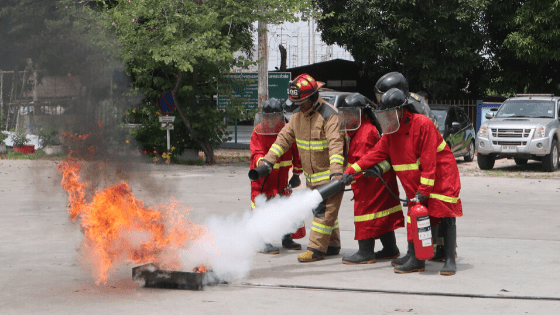Training is an essential priority for any subject that we wish to become proficient in. The HAZMAT training field is no exception to this. However, due to the serious and strenuous nature of HAZMAT response, it is important to safely execute training in a way that doesn’t damage our gear or our health.
Often times one of the most costly things we can do to our response gear is ruining it while in training, rendering it useless during an actual event. Ripping and tearing your issued PPE during a training that, let’s face it could have been planned better, hurts no one but our own members. From bunker gear scraping across a concrete truck bay to a plastic CPC being torn from an ultra-impossible scenario that our training officer threw together can become costly and wasteful.
I may strike a nerve with this one, so prepare yourself now. I feel that most chemicals we commonly deal with as HAZMAT responders can be mimicked with much safer alternatives – rather than using the real things. Many times training facilities or classes boast the fact that live agents are used, and this peaks much interest for the student.
Degrading our PPE for the sake of real meter readings and visual cues is a costly degradation to bestow upon gear that you will decon and possibly re-don in the near future and assume it will protect you adequately. Visual cues are able to be exaggerated, and meter readings manipulated without exposing your gear, and potentially yourself, to harmful materials that every day becomes part of a long list of carcinogens.
Another consideration during training is that of your gas detection equipment. It is no secret that gas detection equipment can be very costly, and sometimes hard to replace. While learning how to use and interpret your detectors efficiently is imperative; a mistake while training could render some out of service for quite some time. We are always looking for ways to make detection more realistic, whether through cross sensitivity or simulation. Sometimes, however, an overzealous approach to making meter equipment respond to atmospheric stimuli – can end up costing us in burned sensors, and possible damage to our front line equipment. Simulation is the future of training, and gas detection is no exception to this.
Time and time again, especially in this glorious age of the internet we are in, we are bombarded with self-proclaimed subject matter experts, who claim their tactics are the only way, or that their way of approaching specific problems is pretty much be all end all. Sifting through these mirages and other facades can prevent us from potentially wasting time, or not being open to other ways of thought about particular subjects.
These statements are true not only for HAZMAT, but fire, and pretty much any other subject if you look hard enough only. It’s great to try new tactics, and store them in your toolbox for the next time the alarm goes off, however, keep an open mind. While I love my leather helmet, I am very open to the possibility that technology may be to the point where I need to hang it on a wall and choose safety over looks.
In closing, training in a necessity for all of us no matter what industry we are in. From oil and gas to emergency response, staying up to date on our skills and tactics is a must if we are to remain successful. Keep an open mind, and protect your equipment. These are the biggest keys to remember while training. Or you may find yourself with an expensive bill, and a rookie who really didn’t learn anything.

